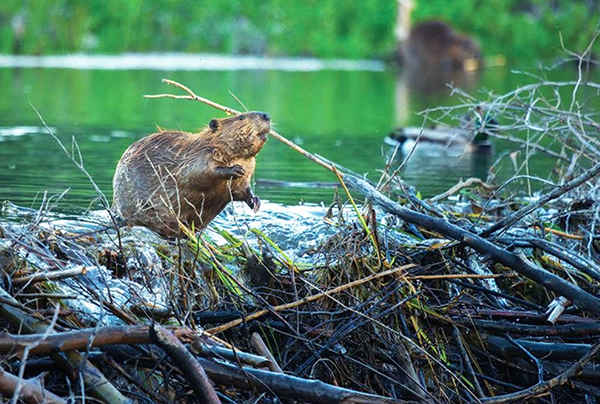Why do beavers build dams?
In the tranquil waters of North America’s streams and rivers, a remarkable creature works tirelessly, reshaping its environment with astonishing precision. The beaver, often regarded as nature’s engineer, constructs elaborate dams that serve a multitude of purposes within its ecosystem.

In this article, we delve into the fascinating world of beaver dams, exploring the reasons behind their construction, the meticulous process involved, and intriguing facts about these architectural marvels.
The Purpose Behind Beaver Dams
Beavers, belonging to the family Castoridae, are renowned for their proficiency in dam building. But what drives these industrious rodents to undertake such monumental construction projects?
The primary motivation behind beaver dams lies in their innate need for shelter, safety, and sustenance.
Habitat Creation
One of the foremost reasons for beavers to build dams is to create suitable habitats known as beaver ponds. These ponds offer a safe haven where beavers can build lodges or burrows to raise their young, safe from predators like wolves and coyotes.
Additionally, the deep, calm waters of these ponds provide protection during winter months when ice covers other bodies of water.
Food Security
Beaver dams serve as a means to control water levels, allowing beavers access to their primary food source: tree bark. By flooding areas upstream of the dam, beavers create underwater caches of branches and logs, known as “food caches,” which they can access throughout the year.
Moreover, the flooded vegetation surrounding the pond becomes a readily available food source, sustaining not only beavers but also other wildlife species.
Territory Marking and Communication
Beavers are territorial creatures, and the construction of dams plays a vital role in marking their territory. The scent glands located near a beaver’s anus secrete a substance called castoreum, which is used to scent-mark territory boundaries.
Beaver dams, through their prominent presence and distinct scent, communicate territorial ownership to neighboring beaver families.
The Art of Beaver Dam Construction
The process of building a beaver dam is a testament to the species’ engineering prowess and cooperation within familial units.
While the specifics may vary depending on factors terrain and available resources, the general steps involved in dam construction are as follows:
Site Selection for Dam Construction
Beavers carefully select a suitable site for dam construction, choosing narrow sections of streams or rivers with a sufficient supply of woody vegetation nearby.
Gathering Building Materials
Using their powerful jaws and sharp incisors, beavers fell trees and collect branches, logs, and mud from the surrounding area. These materials serve as the building blocks for the dam.
Construction Commences
Beavers begin by placing larger logs and branches across the streambed, forming a foundation for the dam. They then weave smaller branches and sticks between the larger pieces, reinforcing the structure.
Mud and Debris Packing
To further strengthen the dam and make it watertight, beavers pack mud, leaves, and other debris between the branches and logs. This meticulous process helps seal any gaps and prevents water from seeping through.
Ongoing Maintenance

Beaver dams require constant upkeep to remain functional. Beavers continuously monitor the integrity of the dam, repairing any damage caused by erosion or flooding. They also add additional layers of mud and vegetation as needed to maintain structural integrity.
Fascinating Facts About Beaver Dams

- Beaver dams can vary greatly in size, ranging from a few feet to over half a mile in length.
- The largest beaver dam ever discovered stretches over 2,790 feet (850 meters) in length and is located in Wood Buffalo National Park, Canada.
- Beaver dams have far-reaching ecological impacts, influencing water flow, sediment deposition, and the distribution of plant and animal species.
- In some cases, beaver dams have been credited with mitigating the effects of drought and helping to restore damaged ecosystems.
The construction of beaver dams stands as a remarkable example of nature’s ingenuity and adaptability. Beyond their practical functions of providing habitat, food, and territorial demarcation, these structures contribute to the intricate balance of ecosystems across North America.
By understanding the motivations behind beaver dam construction and the intricacies of their building process, we gain a deeper appreciation for the vital role that beavers play in shaping their environment.












